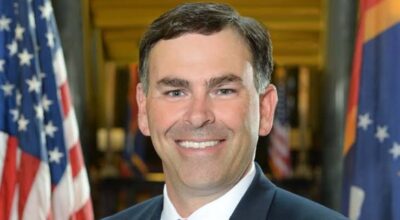Salter: Is there a right not to be offended or uncomfortable?
Published 12:00 am Tuesday, August 23, 2016
STARKVILLE – Part of the evolution of post-Internet life in our society is the growing notion – particularly in the media and on university campuses – is the notion that consumers of content (print and digital content or simply those passing in view or earshot of a public event) should be warned that some of that content might offend them or make them uncomfortable.
We long ago accepted trigger warnings of a sort in television: “The following program contains scenes of (fill in the blank here) and may not be suitable for all audiences. Viewer discretion is advised.” But that still misses the mark in describing what’s happening now.
Specifically, so-called “trigger warnings” is a concept designed to flag content that authors Greg Lukianoff and Jonathan Haidt described in a 2015 article called “The Coddling of the American Mind” in The Atlantic as a movement “undirected and driven largely by students, to scrub campuses clean of words, ideas, and subjects that might cause discomfort or give offense.”
Cornell University assistant professor of philosophy Kate Manne wrote in The New York Times: “The idea was to flag content (in an academic environment) that depicted or discussed common causes of trauma, like military conflict, child abuse, incest and sexual violence. People could then choose whether or not to engage with this material.”
But the concept has societal implications far beyond college campuses and how professors impart information to students in an academic setting.
One might argue that the 2016 presidential campaign has been a particularly fertile field for this debate. Republican nominee Donald Trump’s unfiltered and often outrageous comments on race, religion, immigration, terrorism, and the physical, mental, and/or emotional capacities of his political opponents has certainly raised those same issues.
Earlier this year, what came to be called “chalkings” on college campuses by Trump supporters on a number of university campuses across the country raised a debate over the emotional impacts of what students who opposed Trump or some of his philosophies saw or read. The chalkings drew substantial protests on a number of campuses.
On the other side of the political spectrum, supporters of Democrat and avowed socialist U.S. Sen. Bernie Sanders also formed “chalk squads” to extol their virtues of that candidate in exactly the same way.
Lukianoff and Haidt summed up the phenomenon of “trigger warnings” as follows: “The press has typically described these developments as a resurgence of political correctness. That’s partly right, although there are important differences between what’s happening right now and what happened in the 1980s and ‘90s.
“That movement sought to restrict speech (specifically hate speech aimed at marginalized groups), but it also challenged the literary, philosophical and historical canon, seeking to widen it by including more diverse perspectives. The current movement is largely about well-being.”
What does the development of the culture of “trigger warnings” at the collegiate level suggest about the future of political debate in this country? Perhaps it means nothing. But perhaps it speaks volumes.
The notion that there exists an entitlement not to be offended or challenged or to be confronted with uncomfortable information is a notion that would seem to set up two extremes. On the one hand, there’s the pitch perfect political pabulum of non-controversial, not-confrontational rhetoric that seeks conflict avoidance as the highest and best goal. On the other is outrageous, rabble-rousing, incendiary rhetoric designed to enflame the audience. Expect both approaches between now and November.
Clinton calls Trump “dangerous.” Trump calls Clinton “lying Hillary.” Civility has been left at the political altar in this race.
It’s safe to assume that the final ten weeks of the 2016 presidential campaign is one in which “viewer discretion” is certainly advisable. Clinton’s poll numbers are such as to encourage a pressing of her advantage in battleground states while Trump may be forced to double-down on some of his more incendiary claims to try and move his poll numbers.
(Sid Salter is a syndicated columnist. Contact him sidsalter@sidsalter.com.)




